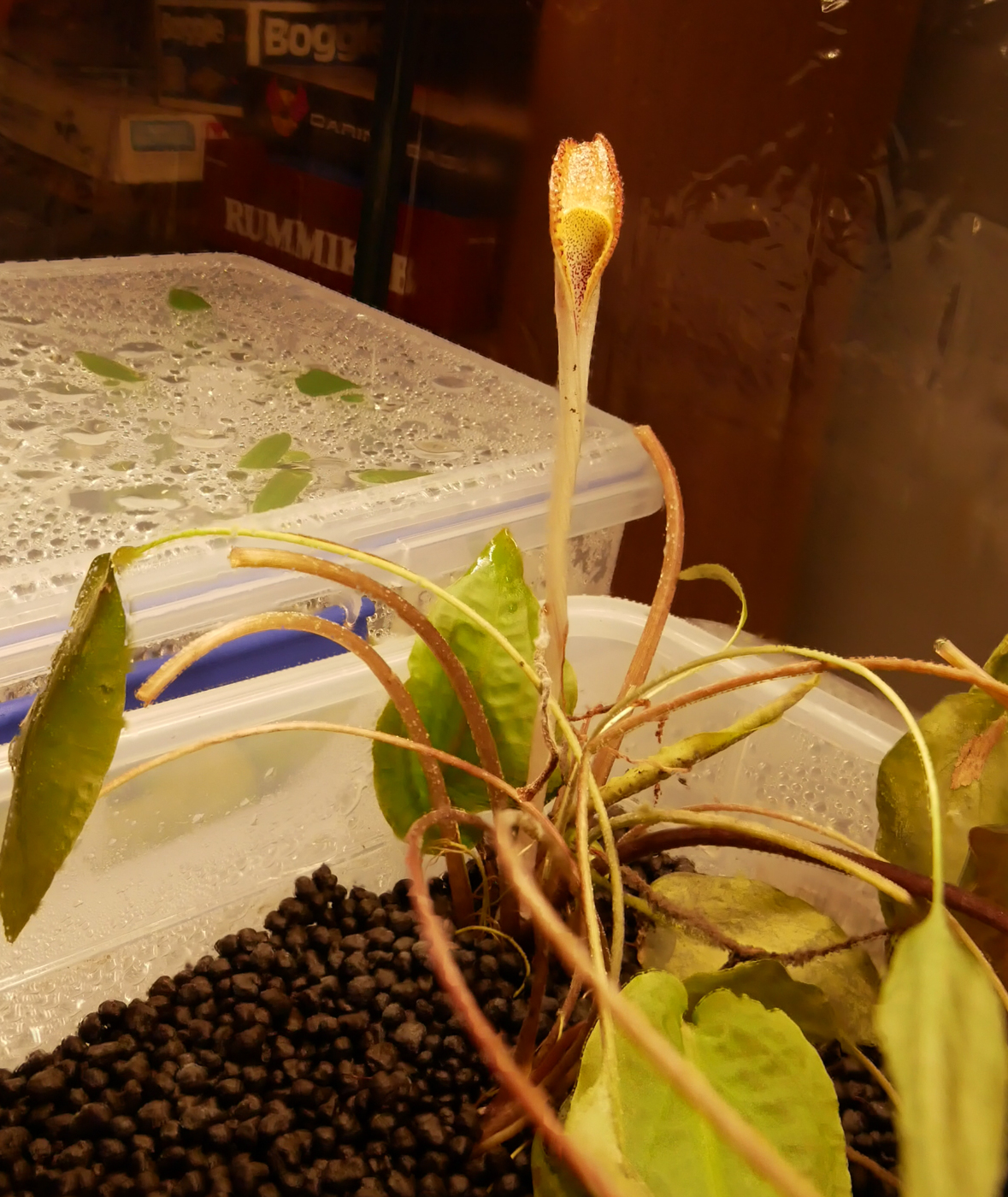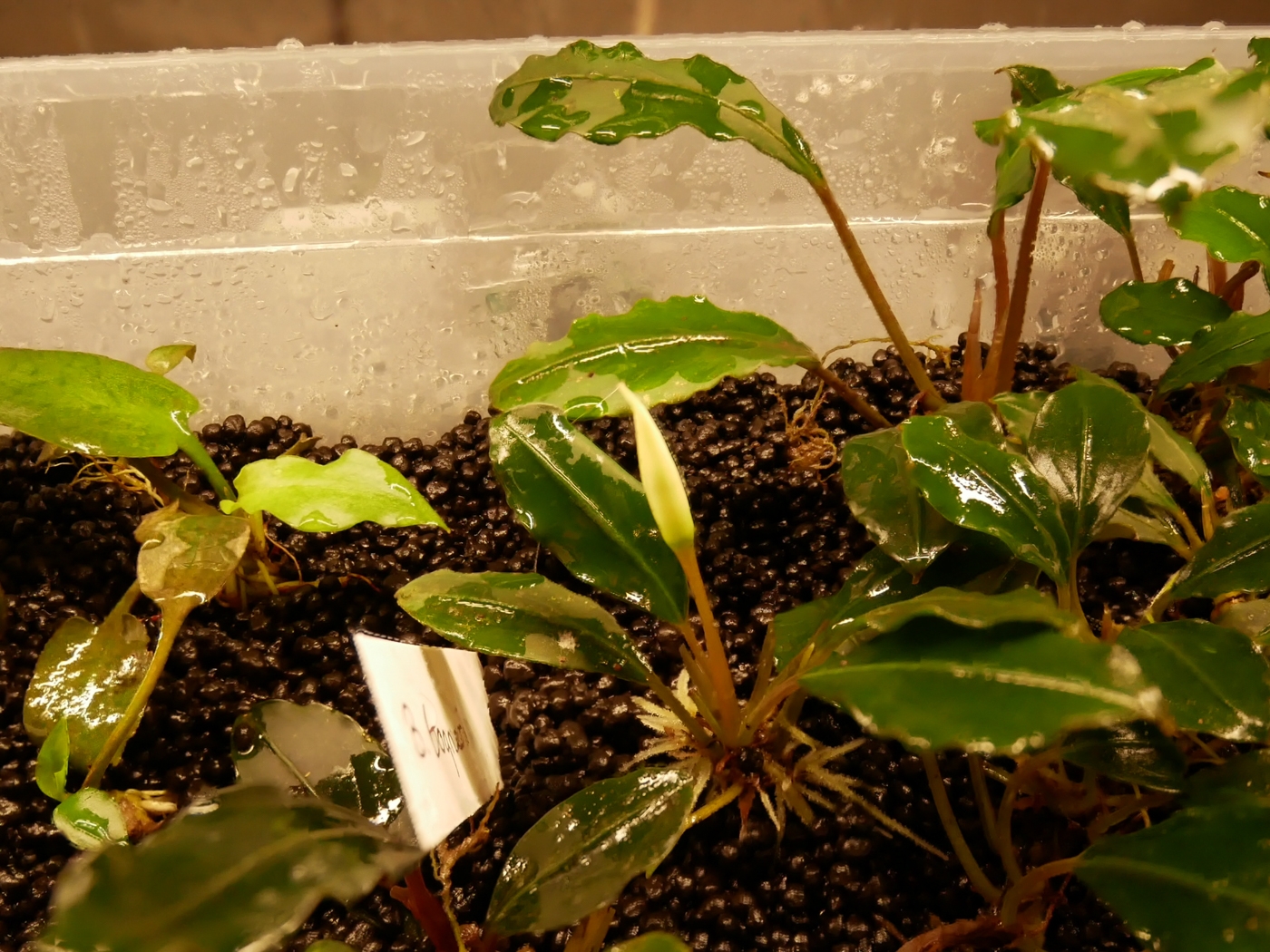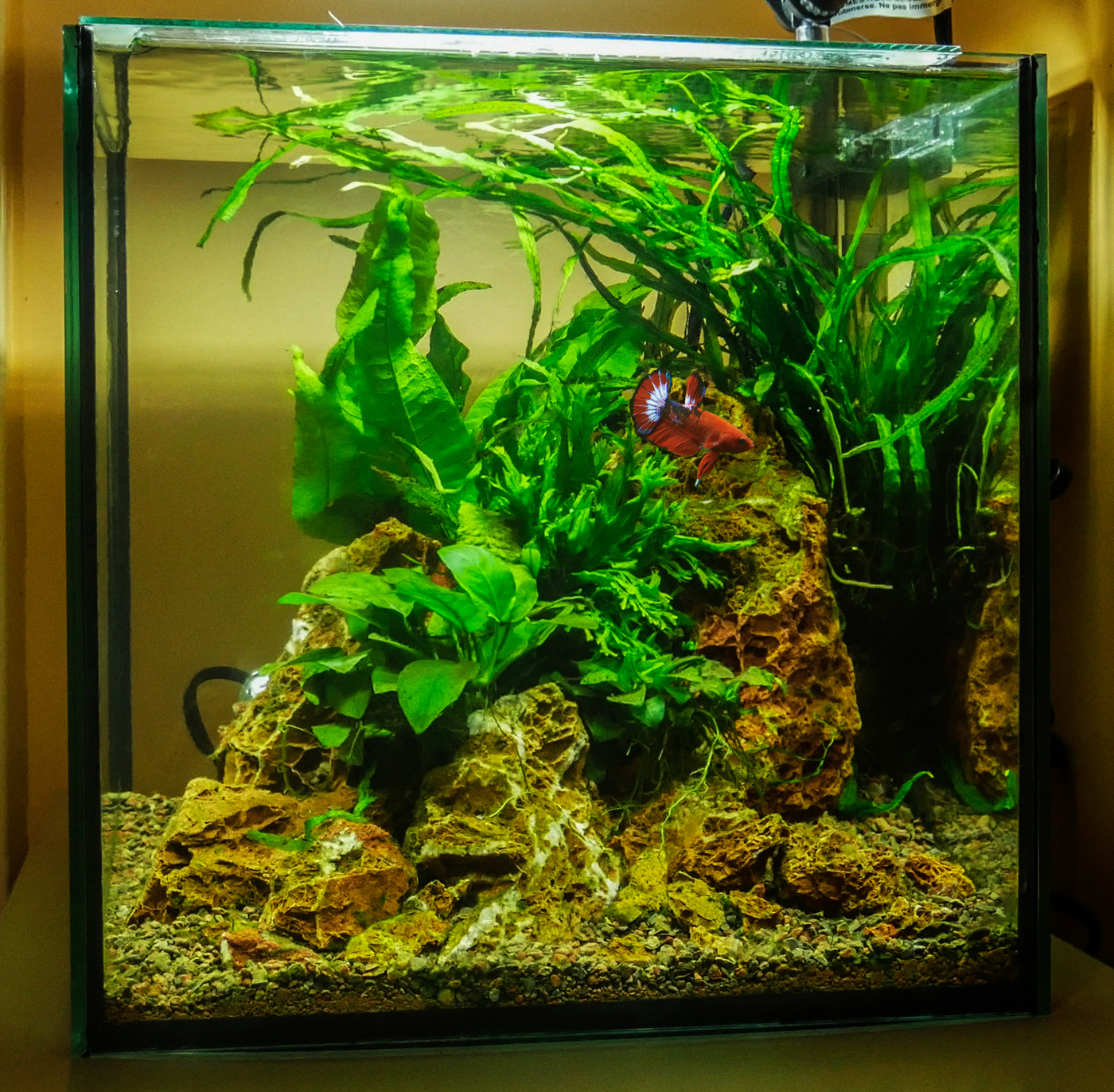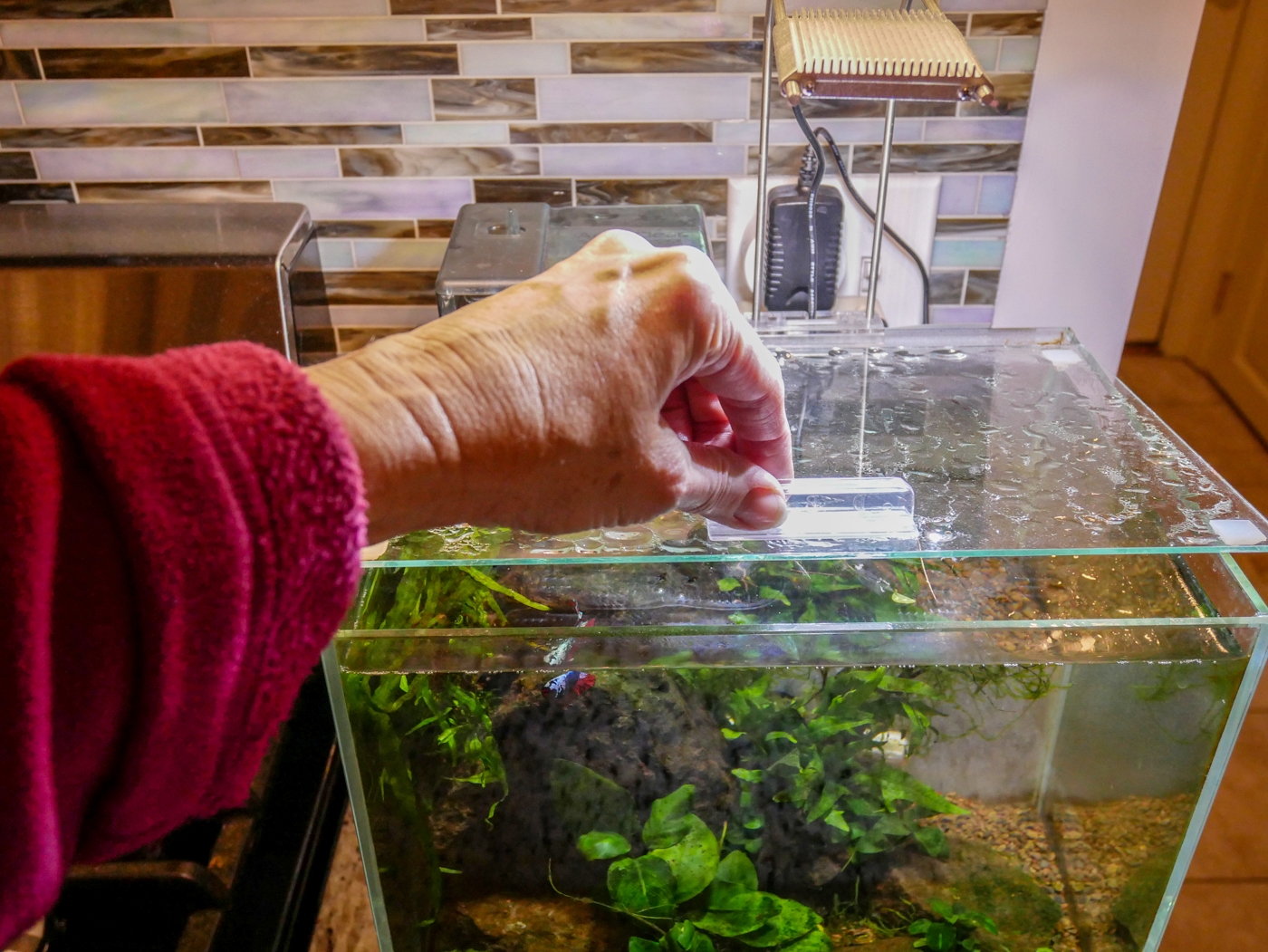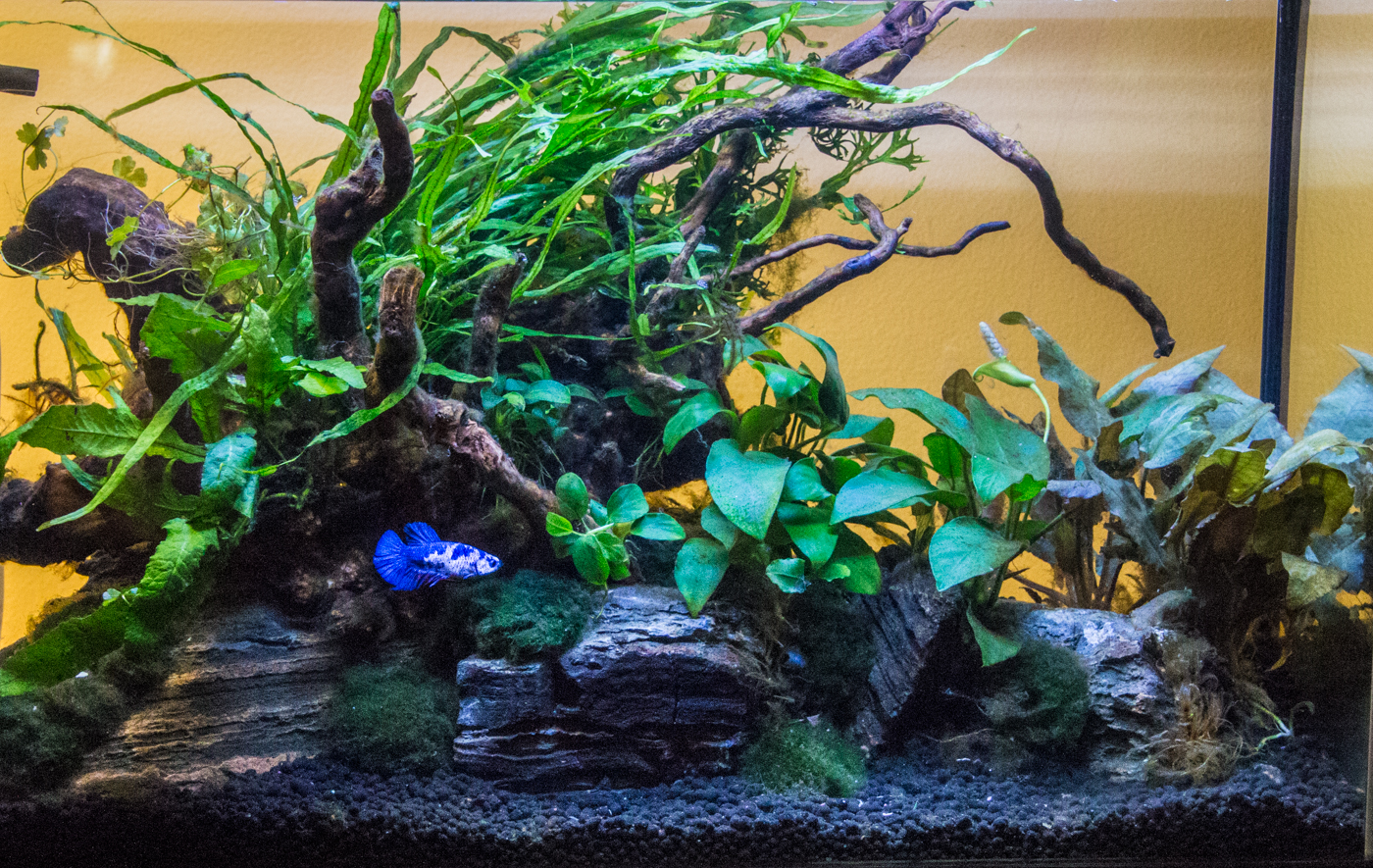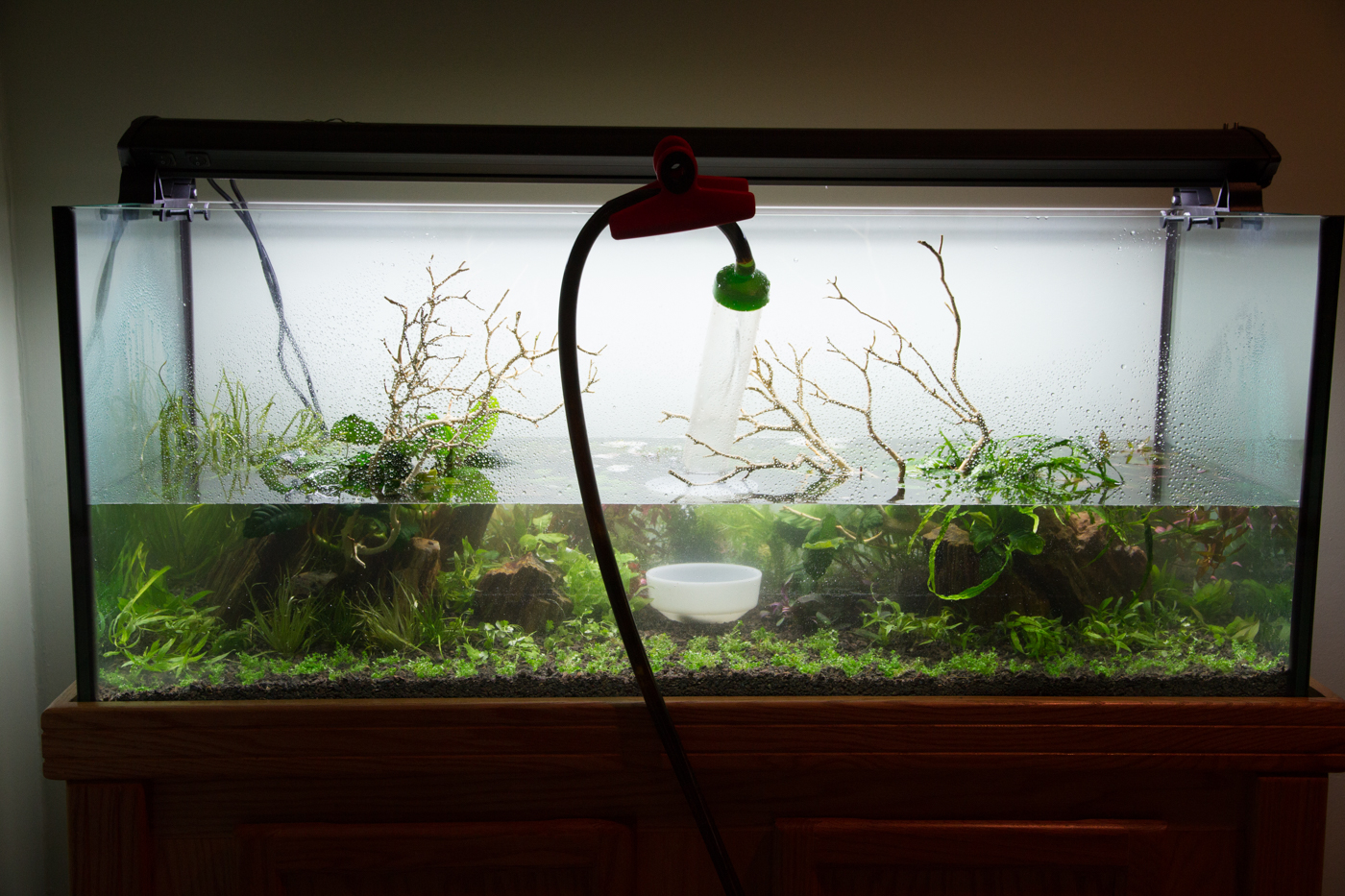It can be very useful to keep some of your aquatic plants in emersed set-ups. You can learn about them and enjoy their flowers, positively identify species, propagate some species more quickly and store plants that you don't have space for in your current tanks.
I had been keeping aquatic plants emersed in a variety of glass and plastic containers on my desk and kitchen counter with under-cabinet lighting for some time, but I decided I wanted something more permanent and versatile.
Plants in a mis-mash of containers on my desk
Really, the only place in my house where I have room for such a set-up is in the basement, which is pretty cold year round. In the summer the temperature runs around 65°F and in the winter it drops to about 50°F. So I would need to heat the system in some way, and obviously I would need to provide artificial light as well.
I bought two little indoor greenhouses from Amazon, but I have found that closed plastic containers work great for keeping humidity in, so the plastic covering for the green houses isn't necessary other than maybe holding a tiny bit of heat in. Wire storage racks that were SLIGHTLY longer would allow two file boxes side-by side which would be more convenient.
I definitely needed heat, and the most economical way I could find to do it was to use seedling heat mats on a thermostatic controller. I use one controller for a set of 4 mats, one on each shelf.
For lighting, I found that under cabinet LED's work just as nicely on the rack as they did upstairs on my counter and desk, and are inexpensive both to install or run. It's hard to find ones that are not on motion sensors, but the ones linked below work great. I zip tied them to the bottom of each shelf for the plants below. For the top rack, I had to zip tie a square dowel above to have something to attach the light to at the right height. The lights are all on timers controlled by an iPhone app. (I'm using these on all my aquariums now too)
I am slowly switching over to using as many translucent file boxes as will fit on my shelves, with 2" seed pots. I can fit 12 pots per box this way. The boxes keep plenty of moisture in... it actually rains inside them. The translucent plastic seems to let enough light through for everything I'm growing, but some people further modify these boxes by cutting a window in the top of each and siliconing in a plexi sheet to allow even more light through. I have also used a mixture of smaller boxes, but the boxes make it harder to keep plants separated and properly labeled, and don't have enough head-room for many of my plants.
The file boxes each hold 12 2" pots. And each pot is labeled with the species (and, if known, locality information)
I use a number of smaller containers as "holding space" for plants that I just don't currently have room for in my tanks. Who wants to throw out pretty Anubias! For these plants I put a layer of calcined clay over the soil based substrate to more closely mimic their conditions in nature. This is also a great way to save Anubias that has become infested with algae. The new emersed leaves will, of course be completely algae free, and you can just clip off any ugly leaves!
I've been really happy with these set-ups. All the plants are growing well, and many have been flowering.
For planting media, I have been very happy with Fluval Stratum for the most part. I have a few containers where I used some left-over Tropica substrate and that seems to work about equally well. I line the pots with a piece of filter floss before putting substrate in, to keep it from leaking out the holes in the bottom of the pot. The pots then stand in an inch or two of water. These are aquatic plants, so none of them mind wet roots! Many Cryptocoryne growers use different substrates than I have, but so far, all my Crypts, from black water species to limestone species seem to be quite happy with the Fluval substrate. All the more typical aquarium species of course, do fine in it too.
When first transitioning plants from the aquarium to the grow-out racks, I mist them daily, but they soon adapt to the humid emersed conditions in the boxes. I fertilize as needed with organic Bonsai fertilizer that I also use for my Bonsais. It is quite mild, and most of these plants don't require heavy fertilization.
Here's list of the supplies I used for my racks, and links to the parts on Amazon:
Green house
Seed mats
Controller
Lights
Timers
Tubs
Pots
Labels




